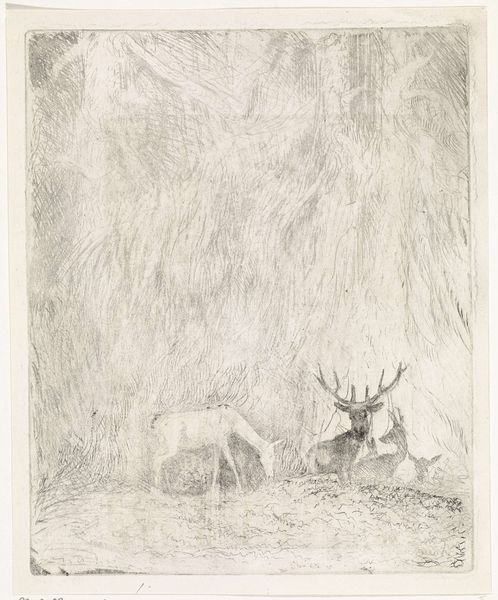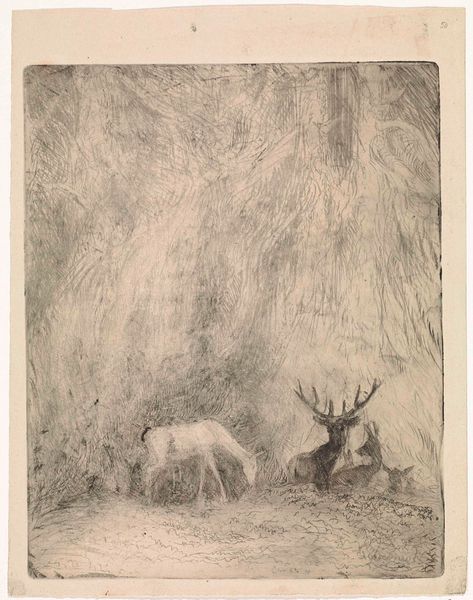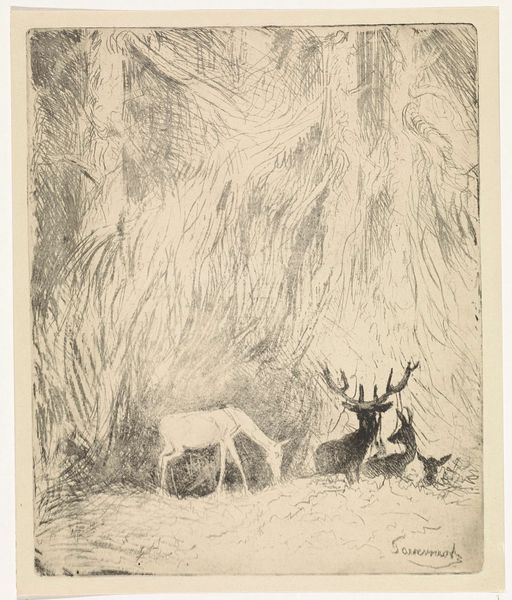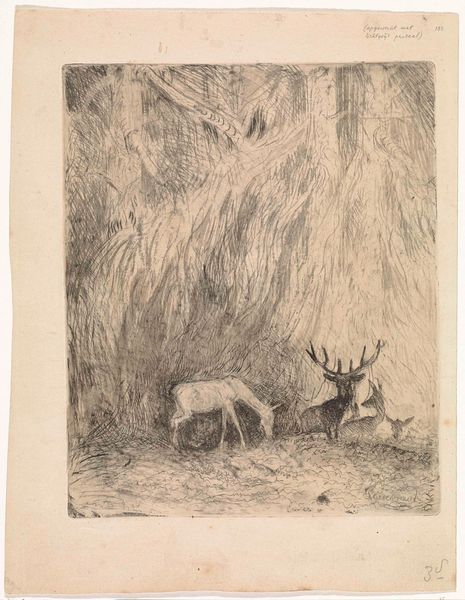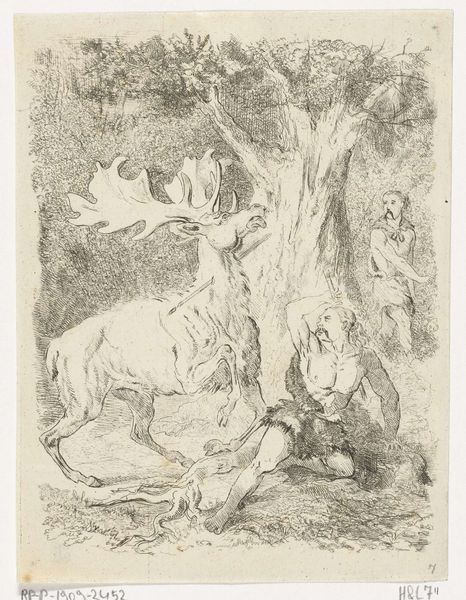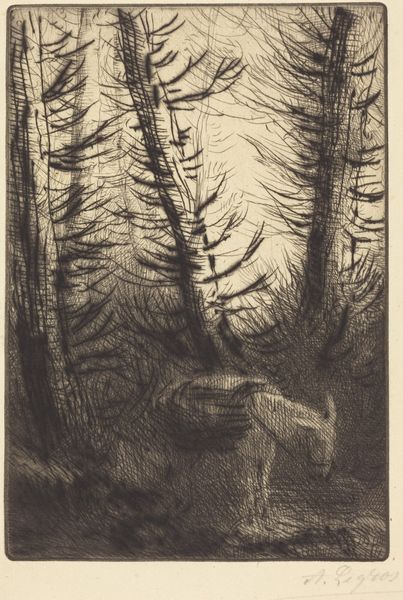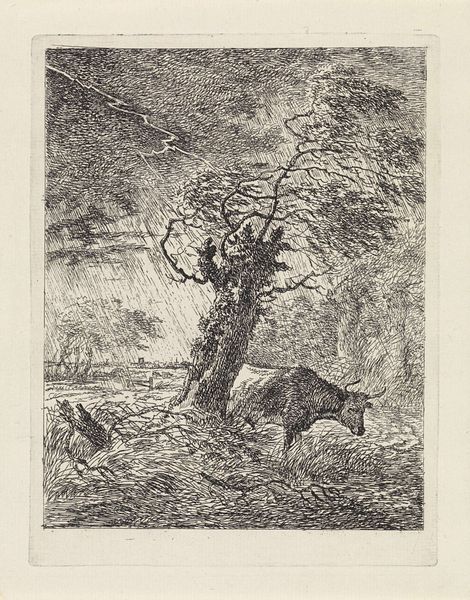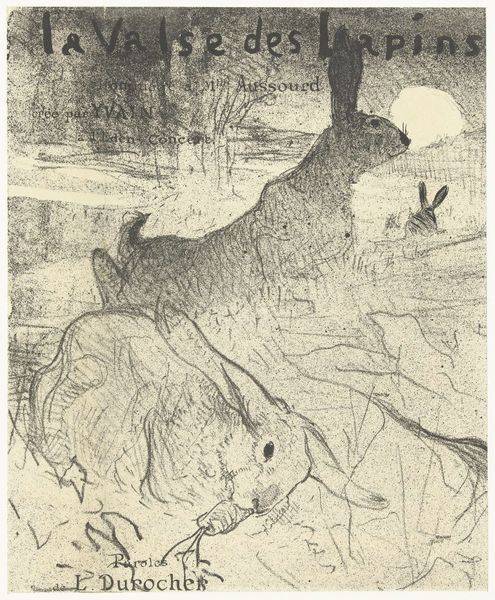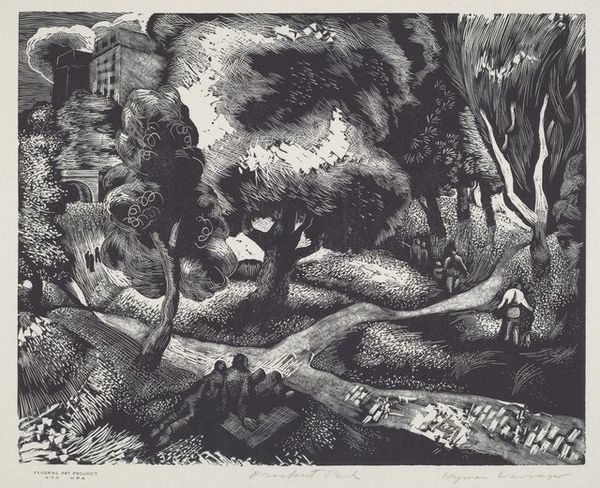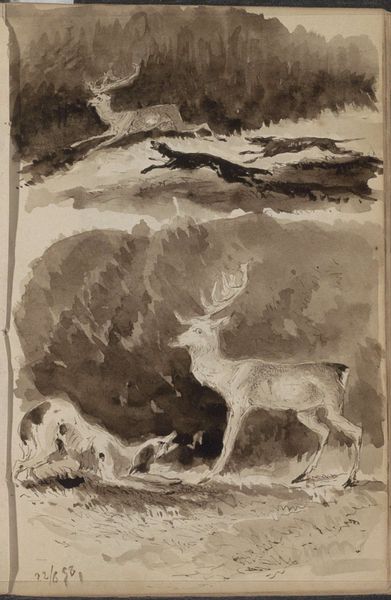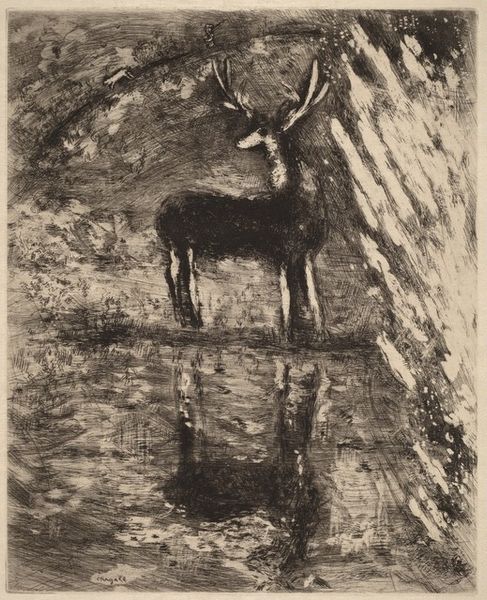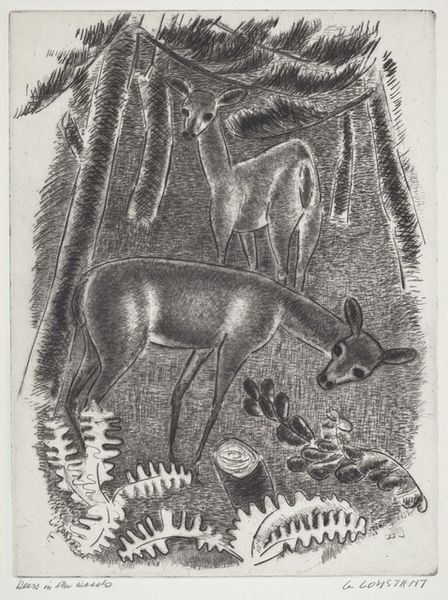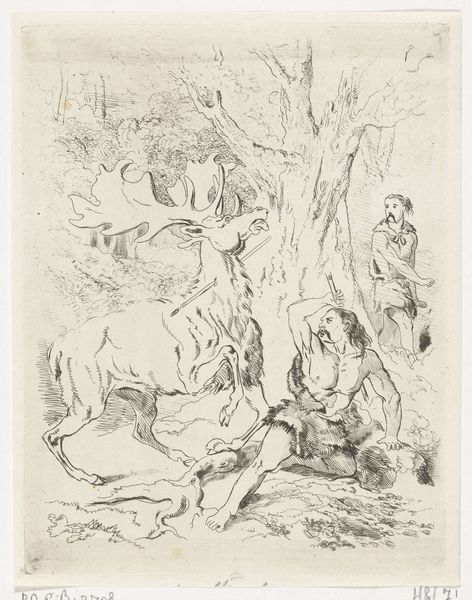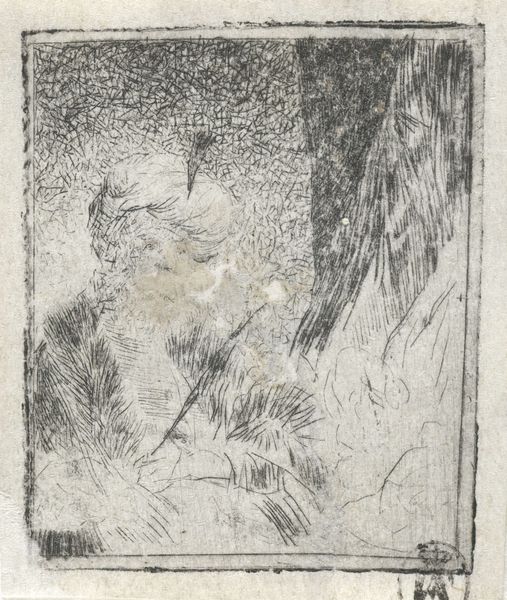
drawing, print, etching
#
drawing
# print
#
etching
#
landscape
#
figuration
#
realism
Dimensions: height 209 mm, width 172 mm
Copyright: Rijks Museum: Open Domain
Editor: So, this is "Herten in een Boheems woud," or "Deer in a Bohemian Forest," made between 1819 and 1881 by Johannes Tavenraat. It's an etching. I find the scene quite peaceful, a little family of deer sheltered in the woods. What do you see in this piece? Curator: It’s interesting to consider this tranquil depiction against the backdrop of 19th-century social and political upheaval. Landscapes like this often served as vehicles for expressing ideas about nationhood and belonging. Tavenraat, working in the realist style, might be subtly engaging with Romantic notions of nature as a refuge, a pure space untouched by industrialization, yet made accessible through printmaking. Do you think the choice of deer carries any symbolic weight? Editor: Symbolically? Maybe. Deer are often seen as gentle or vulnerable. I guess that could be a statement on vulnerability in the face of… progress? Curator: Precisely! Think about how artists like Courbet used Realism to critique the establishment. Perhaps Tavenraat is, in his own way, pointing to the fragility of the natural world and, by extension, a more traditional way of life disrupted by modernity. The black and white emphasizes stark contrasts. Are there divisions suggested by color, and access or power? Editor: So, the black and white could suggest… division? Like the city versus nature? Or maybe something about class? Those who can access nature versus those who can't? Curator: Exactly. The deer themselves could be interpreted as symbols of the working class, displaced and seeking refuge. The "Bohemian" forest itself evokes a space outside the norm, a haven for those marginalized by mainstream society. Does that interpretation change your initial peaceful impression? Editor: Definitely gives me something to think about. It's like the artist is using beauty to draw us in and then asking us to consider something deeper about society. Curator: Precisely! And that tension is where art often becomes a powerful catalyst for social change. There’s so much embedded in art – thinking about its cultural and historical importance is eye-opening.
Comments
No comments
Be the first to comment and join the conversation on the ultimate creative platform.
